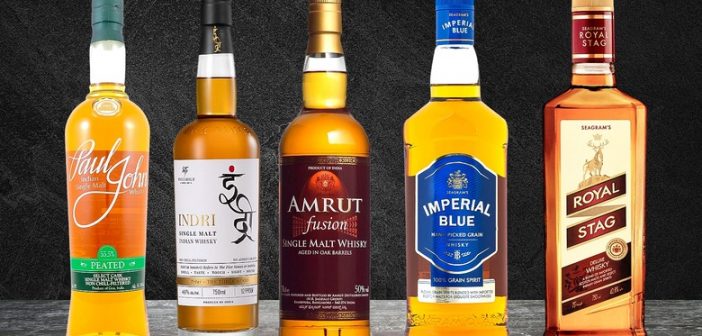India has emerged as a significant player in the global whisky market, with a growing footprint in exports. Indian whiskies are gaining international recognition, driven by competitive pricing, unique flavors, and strategic branding. This detailed report explores the major whiskies exported from India, the key export markets, and the impact of these exports on the Indian economy.
Major Indian Whisky Brands Leading Exports
Indian whisky brands such as Officer’s Choice, McDowell’s No.1, and Royal Stag have been at the forefront of the export market. These brands are popular not only within India but also in several international markets, where they are appreciated for their quality and affordability. Amrut Distilleries and Paul John are other notable names, renowned for their premium single malts, which have gained accolades in markets like Europe and the United States.
Export Markets and Growth
The major export destinations for Indian whiskies include Africa, the Middle East, and Southeast Asia. In these regions, Indian whiskies have captured significant market share due to their competitive pricing and the large Indian diaspora, which drives demand for familiar brands. The United Kingdom and the United States have also emerged as key markets, especially for premium brands like Amrut and Paul John. These brands cater to a growing segment of whisky enthusiasts and connoisseurs looking for new and exotic flavors.
Economic Impact and Benefits
The export of Indian whiskies significantly contributes to the Indian economy. In 2023, India exported approximately 260.07 million cases of whisky, with the market projected to grow at a CAGR of 7.6% between 2024 and 2032. This growth translates into substantial revenue generation and job creation within the country, supporting the agriculture, manufacturing, and service sectors. The growth of the whisky export market also helps improve the trade balance and fosters global economic ties.
Challenges and Considerations
Despite the success, Indian whisky exports face several challenges. The stringent regulatory environment in some countries, high tariffs, and stiff competition from established global brands can hinder market penetration. Additionally, there are concerns regarding the standardization of quality and the perception of Indian whiskies in certain markets, where they may still be viewed as inferior to Scotch or American whiskies.
Conclusion
The export of Indian whiskies is a booming sector with a promising future. By leveraging its unique position in the global market, India has the potential to expand its footprint further. Continued focus on quality, strategic marketing, and overcoming regulatory hurdles will be key to sustaining and enhancing this growth trajectory.





